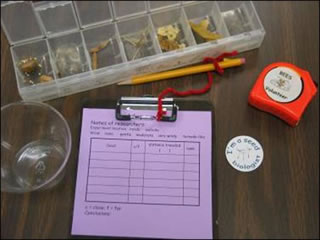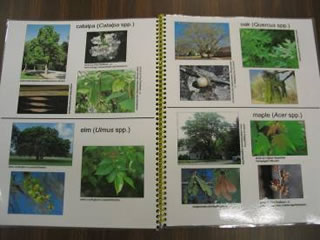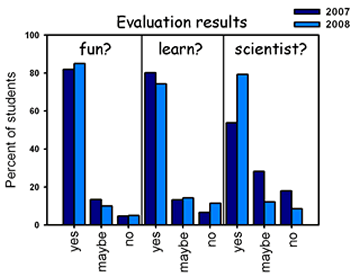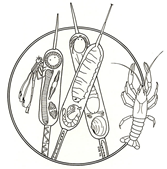Outreach
Wind dispersal of seeds
This program works best with 3rd to 5th graders because they need to be able to measure with a measuring tape. The number of seeds used, precision of measurement, and details of data analysis can be modified for different ages and time periods.
Overview: This life science unit investigates how plants move – particularly seed dispersal by wind. Students work in small teams to evaluate how far different seeds move in still and windy conditions. Seed selection and details of methods are determined by student teams. Data are analyzed as a class. Steps in doing experiments are reviewed and reasons for variation in data are discussed.
Specific goals of the program:
1. Let students experiment with different types of seeds and determine attributes that increase seed dispersal by wind.
2. Encourage problem-solving by students during the experiment by providing non-detailed instructions and having students to decide methods.
3. Have students understand that they are doing all the steps in scientific research (i.e., background knowledge, generating a hypothesis, collecting replicated data, data analysis, and drawing conclusions based on results).
4. Have students understand that it is normal to have variation in data by comparing data among teams. Students learn that both the methods used by the researcher and experimental conditions can affect results.
5. Encourage the students to consider themselves as scientists!
pdf downloads:
- Teacher's Guide with detailed methods, including background information, data analysis, and follow-up activities (making seeds)
- Data sheets(with 3 options)
- Photopages in PowerPoint showing the plants and seeds that we use
- Evaluation forms for students

After an interactive discussion on how and why animals and plants (seeds) move/disperse, each team of 2 or 3 students are given a set of several seeds and a pictoral diagram for seed identification. Teams are also supplied with data sheets on clipboards, tape measurers, and a plastic cup 'target'. Student team members choose 2-3 seeds each, predict whether seeds will land close or far from the target, then drop seeds and measure the distance that seeds land from the target.
The experiment is done twice- once inside and once outside (which is generally windy in Oklahoma). Before going outside, students come up with strategies to estimate long travel distances. We also discuss safety issues (e.g., don't cross roads!).

As students complete their outside data collection, we give them photobooks with pictures of the plants (whole plant, leaves, flowers and seeds). Photobooks are passed among groups.
Data are analyzed by determining the greatest distance measured, ranking seeds by distance traveled (within teams) and using these ranks to count how many times each seed was the closest or farthest from the target (using outside data from each team). This last set of data are on the blackboard and we discuss attributes of seeds that disperse far. We also go over whether the student predictions (of landing close or far) were correct and discuss reasons why there was variation in the data. We go over the steps that they took in doing research.
Lastly, we hand out short evaluation forms and stickers 'I am a seed biologist'.
Here are results of our evaluations in 2007-2008:
Students had fun and learned something new. After seeing the result that many students did not realize that they were scientists, we started stressing this aspect and the percent that thought that they were scientists increased sharply in 2008 (and has remained high since).
[back to top] [back to pdf downloads] [back to Outreach overview]




